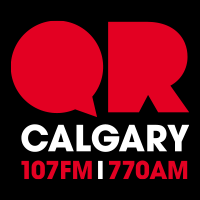With most of Alberta under special air quality statements from fires in the north of the province and air quality health indexes showing high risk to health, Albertans are trying to find ways to breathe easy.

“The problem is really for people who have bad lungs or a bad heart and are having trouble breathing,” Dr. Ted Jablonski told The Morning News on 770 CHQR. “This can be a very, very difficult time for them.
“If they’re running already on reserves, this just wipes out whatever little play they have that allows them to get by in life.”
Wildfire smoke produces particulate matter, some of which is often less than one micron in size. A human hair, by comparison, is about 60 microns in diameter.
That fine particulate matter can get embedded deep within lungs and cause irritation and inflammation.
LISTEN: Dr. Ted Jablonski joins The Morning News to discuss what masks work for wildfire smoke
Jablonski said trying to cover your mouth and nose with a scarf or other mask isn’t very effective in trying to block those tiny particles.
“Just putting a normal scarf over your mouth is probably very minimal help. I sometimes see people come in with surgical-type masks but they’re not even close (in filtering ability). If they’re hanging off or half hanging off, that really is very questionable that that helps at all.”
“There’s really only a few masks out there that truly make a difference. And they have to be rated at N95 or N100 — this is a rating scale of how much particulate matter is allowed through.”
According to Alberta Health Services, an N95-rated respirator can filter out 95 per cent of smoke particles, but does not filter out toxic gases or vapors from wildfires.
Proper fit of the respirators is needed for the filtering to be effective.
WATCH BELOW: 10,000 people forced out, 15 homes destroyed by Alberta wildfires

“If it does not fit properly, the respirator will provide little if any protection and may offer a false sense of security,” an AHS brochure reads.
And an N95- or above-rated respirator can make breathing more strenuous and elevate heart rates. AHS recommends those with heart and respiratory disease only use respirators under the supervision of a healthcare provider.
LISTEN: Dr. Sarah Henderson joins Ryan Jespersen to discuss how wildfire smoke affects the human body
In the same way a respirator needs to be sealed properly to be effective, Jablonski recommends a similar seal for enclosures containing people.
“If you’re spending time indoors, make sure your windows are closed. Make sure there’s nothing that’s allowing any air from the outside inside.
WATCH BELOW: New photos shed light of toll wildfires are taking on northern Alberta

“If you’re in a car, apparently there’s modes that you can get so you’re not bringing in external air into your car while you’re driving.
“So it’s all these things, where you’re just trying to lessen exposure, as a first rule.”
According to AHS, air purifiers with HEPA filters or electrostatic precipitators (ESP) can help reduce levels of indoor particles, but aren’t effective at removing gases and odors. Air cleaners that use ozone, meanwhile, will not remove particles unless paired with a HEPA filter or ESP. AHS warns against using humidifiers or dehumidifiers for cleaning air.
Jablonski said asthma sufferers, including children, will likely have to use their inhaled medications more often.
“Kids sometimes have asthma, right, so they might have to be a little bit more aggressive with their puffers during this time, because they will be a little bit more symptomatic.
“But I think kids with normal lungs should have no trouble at all.”
For those who like to exercise outdoors, Jablonski said working out in heavy wildfire smoke is almost like being a pack-a-day smoker.
“Yes, if you’re breathing deeper, you are truly breathing in particulate matter which is the equivalent of smoking cigarettes.
“So if you’re a smoker in this area, you’re really getting double duty here.”
“For most people this is a nuisance. My eyes burn a little bit. I can taste it in my mouth. Maybe I have a little bit of a sore throat.”
Watch below: With smoky conditions being experienced across Alberta because of wildfires, Emily Mertz takes a closer look at how the effects are being tracked.










Comments